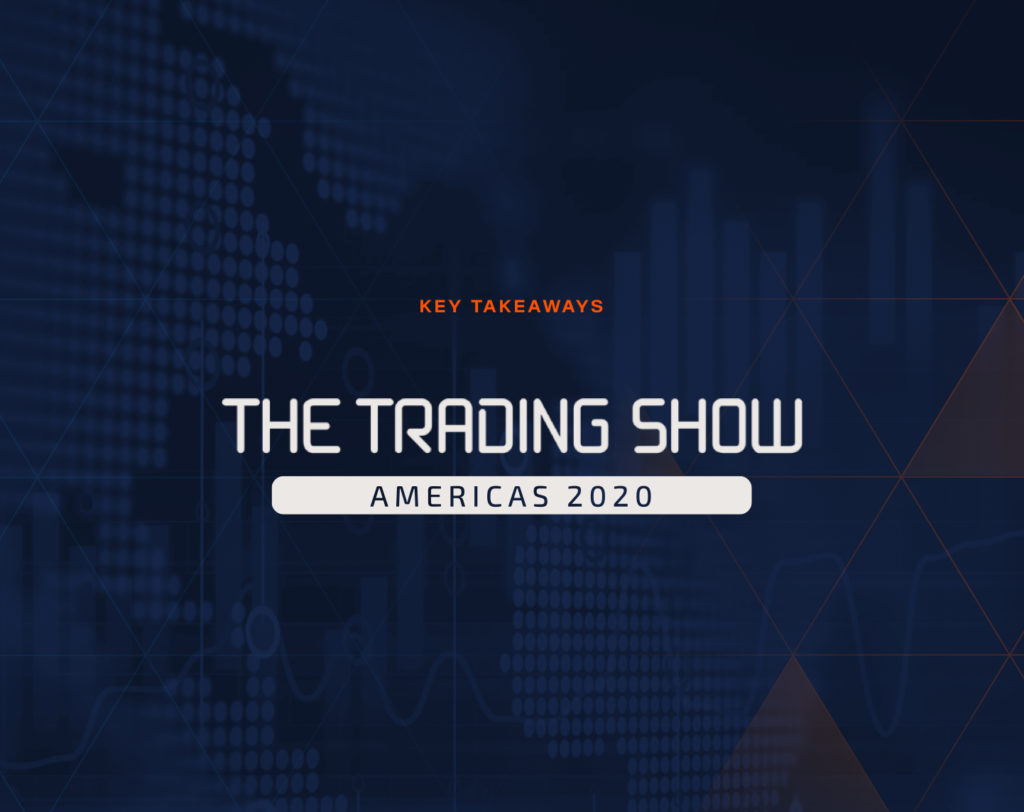While there were a wide variety of thought-provoking panels at Trading Show Americas 2020, certain themes kept coming up in the digital asset-centric talks – like the importance of security and efficiency, institutional expansion within the space, and crypto’s constantly evolving relationship with traditional finance.
Two talks that featured some of our favorite conversations were the “Liquidity in Crypto” panel and the “Custodianship – exploring best measures for protecting your digital holdings” panel. These sessions touched on the broad themes of the conference while diving deeper into intriguing topics and trends. Here are some of the key takeaways from each:
Takeaway #1: Liquidity needs a tech infrastructure
During the discussion on sourcing liquidity, Charlie Méraud, CEO of Woorton spoke to the importance of building a powerful tech infrastructure to implement more trading venues while retaining tight security. Méraud argued that the key is efficient and safe access to a constantly growing pool of counterparties and exchanges. Even as we move into 2021, building a secure infrastructure remains the central theme to liquidity.
Miha Grcar, Head Of Business Development at Bitstamp echoed the sentiment around the importance of a tech infrastructure from an exchange’s perspective. As an exchange you have to always be there for market participants when they need them, no matter what – meaning no delays on their API or any other issues, even in the case of a “high volatility event.” Grcar stated that “no delay, no risk” is central to their strategy as an exchange. With innovations like zero-confirmation deposits, this goal is well within reach.
Takeaway #2: Fiat on/off ramps are key for the next wave of participation
Michael Rabkin, Head Of Institutional Sales and Global Partnerships at DV Chain brought up the key issues that need to be addressed for crypto to continue to mature as an asset class. In Grcar’s view, helping the asset class mature is all about fiat/crypto on and off-ramps. He referred to on-off ramps as an “essential enabler” for developing the asset class and pointed out that while there are many exchanges, there are far fewer that provide a truly robust infrastructure for this.
We’re certainly in agreement with Bitstamp that fiat on/off ramps are key to the growth of crypto in institutional and retail sectors – that’s why we launched fiat/crypto on-off ramps earlier this year.
Takeaway #3: Libra will propel regulatory clarity
One topic Chris Sullivan of Hyperion Decimus introduced was the need for regulatory clarity in the digital asset space, and how this connects to custodianship. The general consent was that traditional custodians will need more regulations to encourage crypto adoption. Certain jurisdictions have already made strong decisions with crypto regulations, including Germany – with the prediction being made that forward-thinking jurisdictions like this one will lead the charge.
Fireblocks CEO Michael Shaulov added that certain trends in the crypto space, such as the arrival of Libra, may force a greater deal of regulatory clarity to emerge. In Shaulov’s view, this will signal to banks and other large financial institutions that it’s now or never in terms of entering the space; if and when Libra successfully launches, FIs will sense that “they’ll miss the boat if they don’t join” the growing (and increasingly regulated) space.
Fireblocks is committed to helping organizations meet regulatory standards in the digital asset space. We’ve added support for AML and KYT screening (Chainalysis and Elliptic) and offer a fully customizable Policy Engine to automate internal governance and controls.
Takeaway #4: Outdated solutions can’t solve today’s challenges
Another interesting topic from the discussion was around the divide between efficiency and security in digital asset custody, and how these factors have developed recently. Sullivan asked which of the two is more important for custodians to focus on – security or efficiency.
The space generally breaks down into hot vs. cold wallets, with each having their own benefits towards security and/or efficiency. Traditionally, hardware wallets and cold storage are associated with top-tier security, but transacting using these solutions can be extremely slow; on the other hand, hot wallets are known to be fast, but not fully secure.
On the other hand, Shaulov argued that there’s no longer a need to think of security and efficiency as being contradictory. He pointed out that next-generation technology is now available to help solve this divide. Utilizing a mixture of MPC-CMP (multiparty computation), TEEs (trusted execution environments), hardware isolation, and a strong authentication infrastructure, makes it possible to fully invest in both security and efficiency, without sacrificing any aspects of either. “In 2020,” Shaulov said, “you can bind these contradictory properties into something that really allows the market to function.”
Join us at the Trading Show Europe 2020
Interested in learning more about the future of institutional crypto? Our CEO Michael Shaulov will be speaking on the “Custody, Broker, Exchange, oh my – understanding the difference in vendors and solutions” panel.
Here’s the full line up for that discussion:
- Charlie Meraud, Co-Founder & CEO, Woorton
- Miha Grcar, Head Business Development, Bitstamp
- Fabio Federici, Co-Founder, Base58 Capital
- Edd Carlton, Institutional Digital Asset Trader, Flow Traders
- Michael Shaulov, CEO, Fireblocks




